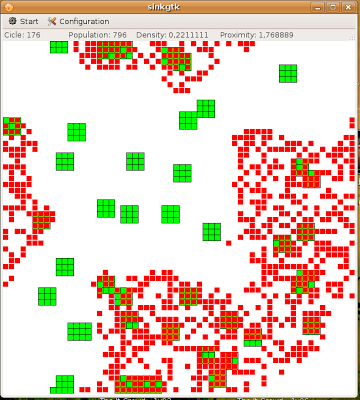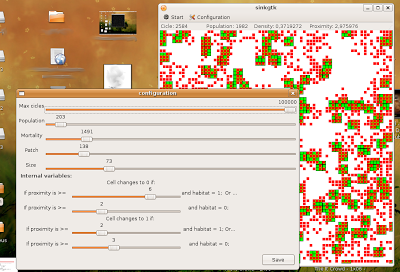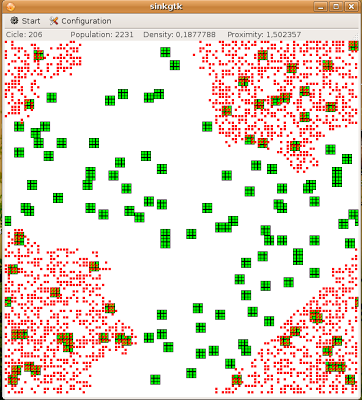SINK 2.0 (CAS)

Jorge Gonzalez Casanovas PhD by Jorge Gonzalez Casanovas is licensed under a Creative Commons Reconocimiento-No comercial 3.0 España License.
Based on a work at casanovas.blogia.com.
Permissions beyond the scope of this license may be available at http://casanovas.blogia.com.
The material Complex Adaptive System Sink (CAS-SINK) is available from Gonzalez-Casanovas & De la Roche under the following offers:
What is a Complex Adaptive System (CAS)
IntroductionCellular automaton consist of an theoretically infinite number of cells, (in practice is finite) which have a finite number of states. These states change depending on the state of their neighbours. Each cell has the same rule for updating.
Este programa asume que la comunicación celular es vecino a vecino, es decir no se da comunicación a distancia. La configuración de la vecindad determina el cambio de estado de la célula, por ejemplo si esta es macho o hembra en el caso de la gónada de
muchos moluscos bivalvos
muchos moluscos bivalvos
The Model
In this program, the cells can have two states: 0 (female) or 1 (male). This state depends on the state of their neighbour cells and the place where the cell is.
These are the default update rules:
. If both the cell and path are 1, and the cell has eight neighbours, the cell becomes 0.
. If the cell is 1, path is 0 and the cell has more than three neighbours, the cell changes to 0.
. If both the cell and path are 0, and the cell has more than three neighbours, the cell changes to 1.
. If the cell is 0, path is 1 and the cell has more than two neighbours, the cell becomes 1.
The user can change all the parameters of the program in the configuration menu.



0 comentarios